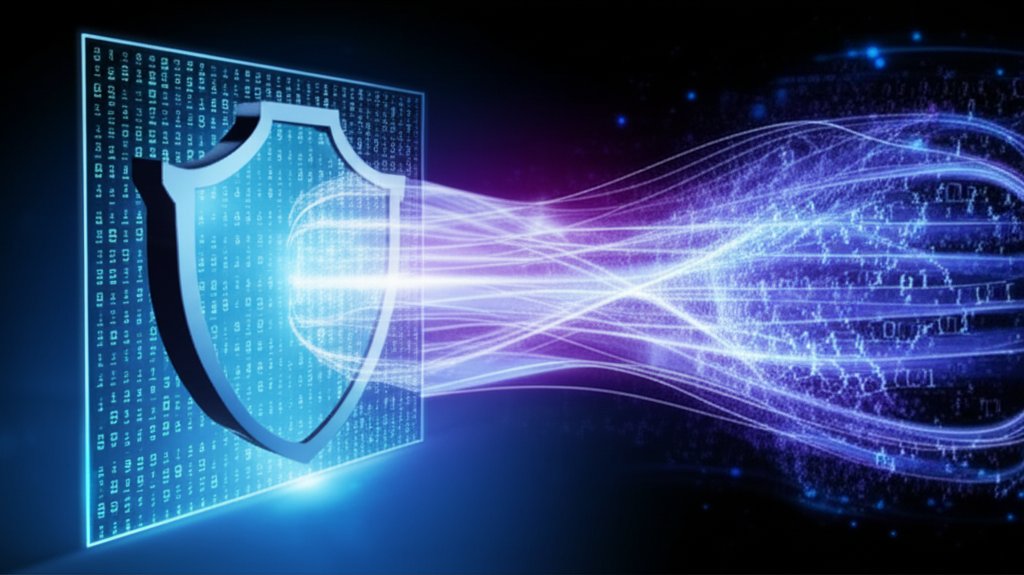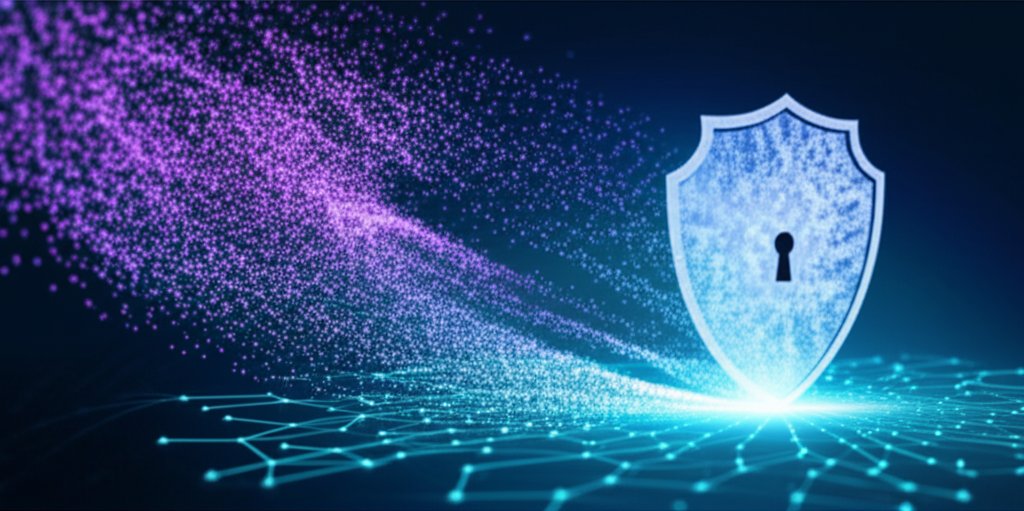The digital world we navigate daily is built on a foundation of trust, secured by incredibly powerful encryption. From your confidential online banking to your most private messages, nearly every digital interaction relies on complex mathematical problems that traditional computers find virtually impossible to solve. But what if the very bedrock of that security suddenly became vulnerable? What if those “impossible” problems became trivial to crack? This isn’t a distant science fiction scenario; it’s the looming threat of quantum computing, and it’s precisely why we must understand Post-Quantum Cryptography (PQC) right now.
You might be asking, “What exactly is Post-Quantum Cryptography, why is it so complicated, and should I really be concerned about it today?” These are valid questions, and they’re ones we, as security professionals, address frequently. Our mission is to translate this complex technical threat into understandable risks and provide practical, empowering solutions for you to take control of your digital security. Let’s decode this quantum encryption riddle together.
Meta Description: Quantum computers could break today’s encryption. Discover why Post-Quantum Cryptography is so complex, what it means for your data, and what everyday users & small businesses should know to stay secure.
The Quantum Encryption Riddle: Why Post-Quantum Cryptography Is Complex & Why You Need to Know
Is Your Data Vulnerable Right Now? Addressing a Common Concern
Before we delve deeper, let’s address a crucial question that often causes anxiety: “Does this mean all my encrypted data is already vulnerable today?” The short answer is: no, not to classical computers. Your current encryption, like that protecting your online banking or emails, is still incredibly robust against any classical computer we have today. It continues to be your first line of defense. However, the threat is insidious because of the “Harvest Now, Decrypt Later” reality. Adversaries, including nation-states, are actively collecting vast amounts of encrypted data today, storing it, and waiting for the day sufficiently powerful quantum computers arrive. Once those machines exist, that data, even if encrypted years ago, could theoretically be decrypted. This is why proactive awareness of PQC is crucial not just for the future, but for protecting your digital legacy starting now.
A Quick Look at Today’s Digital Locks: How Current Encryption Works (Simply Put)
Imagine our current encryption as an array of incredibly strong digital locks. These aren’t physical devices you can pick; they are ingenious safeguards built upon deeply complex mathematical puzzles. When you send an email, log into your bank, or purchase something online, these locks instantly spring into action, scrambling your data into an unreadable mess that only the intended recipient, possessing the correct digital key, can unscramble. It’s an invisible, yet indispensable, guardian of your privacy.
The “Hard Math Problems” Our Security Relies On
Most of our digital security, especially for sensitive data requiring the highest protection, relies on two primary types of mathematical challenges: factoring very large numbers (the basis of RSA encryption) and discrete logarithms on elliptic curves (known as ECC, or Elliptic Curve Cryptography). These problems are so extraordinarily difficult that even the most powerful supercomputers available today would take billions of years to solve them. Simply put, this insurmountable computational barrier is what keeps our data safe and private.
The Everyday Impact
This powerful, invisible math shields nearly every facet of your online existence. It’s the silent protector ensuring your online banking transactions remain private, your shopping carts are secure, your emails confidential, and your VPN connections truly private. Without this cryptographic backbone, our digital society as we know it would grind to a halt. It truly is the invisible framework of our online trust, which makes any emerging threat to its integrity something we must all take seriously.
The Coming Storm: How Quantum Computers Threaten Our Digital Security
While our current encryption is formidable against today’s classical computers, a revolutionary new type of computing is rapidly emerging that will fundamentally change the game: quantum computing. It’s no longer confined to the realm of science fiction; it’s a rapidly developing field with the potential to revolutionize numerous industries – and critically disrupt our existing security paradigms.
What is a Quantum Computer (and Why is it a Game-Changer)?
Unlike your laptop, which processes information using bits that are either a 0 or a 1, a quantum computer employs “qubits.” What makes qubits unique is their ability to exist as a 0, a 1, or both simultaneously (a phenomenon called superposition). Picture a spinning coin that’s both heads and tails until it lands. This property, combined with another called entanglement (where qubits become linked and can influence each other instantaneously, regardless of distance), empowers quantum computers to process vast amounts of information concurrently and tackle specific types of problems that are utterly intractable for classical computers.
It’s crucial to understand that quantum computers are not simply faster versions of regular computers. They are specialized machines designed to solve certain, incredibly complex computational challenges. They won’t replace your desktop for browsing the web or writing documents, but for specific mathematical problems, they represent a monumental leap in capability, capable of shattering our current digital locks.
Shor’s Algorithm and the End of Current Encryption
The primary concern for cybersecurity professionals emanates from a quantum algorithm developed by Peter Shor in 1994. Shor’s Algorithm, if executed on a sufficiently powerful quantum computer, could efficiently break the “hard math problems” upon which RSA and ECC encryption rely. What would consume billions of years for a classical computer could potentially be solved in mere hours or even minutes by a quantum computer utilizing Shor’s algorithm. This means our most widely used forms of public-key encryption would become effectively useless, leaving vast amounts of sensitive data exposed.
Grover’s Algorithm and Symmetric Encryption
While Shor’s algorithm directly targets asymmetric encryption (like RSA and ECC), another quantum algorithm, Grover’s Algorithm, poses a significant, albeit different, threat to symmetric encryption (like AES, which we use for bulk data encryption). Grover’s algorithm doesn’t break symmetric encryption outright but significantly reduces the time needed to find the correct key through brute force. In practical terms, this typically means we would need to use substantially larger key sizes for AES – often doubling the key length – to maintain a comparable level of security. While less of a catastrophic failure, it still necessitates a proactive shift.
The “Harvest Now, Decrypt Later” Threat
Here’s why this isn’t merely a problem for some distant future: it’s the immediate “Harvest Now, Decrypt Later” threat. Malicious actors, including sophisticated nation-states and well-resourced criminal organizations, are already actively collecting and archiving vast quantities of encrypted data today. They are patiently storing it, anticipating the day when powerful quantum computers become operational. Once those machines exist, they could theoretically decrypt all that previously captured data. This means that sensitive information encrypted today – your medical records, financial history, proprietary business secrets, or classified communications – could be compromised years down the line, even if it feels secure now. This urgent reality makes the need for PQC incredibly pressing.
Enter Post-Quantum Cryptography (PQC): Our Future-Proof Shield
This is precisely where Post-Quantum Cryptography steps in. PQC is our proactive defense, designed to create new digital locks that can withstand the unparalleled computational might of quantum computers while still running efficiently on the classical computers we use every day.
What PQC Is (and Isn’t)
Simply put, PQC refers to an entirely new class of cryptographic algorithms engineered to be “quantum-resistant.” These algorithms can be implemented and executed on our existing, classical hardware and software but are believed to be impervious to attacks by even the most powerful quantum computers. It’s crucial to clarify that PQC is not “quantum cryptography” (like QKD – Quantum Key Distribution), which utilizes principles of quantum physics directly for secure communication. PQC is fundamentally about devising new mathematical puzzles that are incredibly difficult for all computers – quantum and classical alike – to solve efficiently.
The Goal: New Math Problems No Computer Can Solve Easily
At its core, PQC seeks to identify and leverage entirely new mathematical problems that are thought to be inherently difficult for both classical and quantum computers to solve efficiently. These problems draw from different branches of mathematics than our current encryption, such as lattice-based cryptography, hash-based signatures, and code-based cryptography. Scientists and cryptographers globally, coordinated by esteemed bodies like the National Institute of Standards and Technology (NIST), are diligently working to identify, rigorously test, and standardize these groundbreaking new algorithms. Our collective goal is to establish a robust new set of digital locks, guaranteeing your data remains private and secure far into the future.
Why PQC Algorithms Are So Complex (Simplified)
While the ultimate goal of PQC – quantum-resistant encryption – is straightforward, the journey to achieve it is anything but simple. The inherent complexity of these new algorithms stems from several critical factors that significantly impact their design, implementation, and overall performance.
The Need for New, Untested Math
For decades, our digital security has comfortably rested upon well-understood number theory problems like factoring. We’ve had extensive time to scrutinize them, attempt to break them, and consequently, build immense confidence in their security. With PQC, we are venturing into less-explored mathematical territories. These novel problems, such as those found in lattice-based cryptography, are intrinsically more complex to manipulate. We are, in essence, learning an entirely new language of digital security. It demands immense mathematical rigor and exhaustive computational testing to ensure these new languages are truly secure against all conceivable attacks, both classical and quantum.
Larger Keys, More Data
One of the most immediate practical complexities of PQC algorithms is their often-larger size. Many of these new algorithms necessitate significantly larger encryption keys and ciphertexts (the encrypted data itself) compared to our current methods. For example, a PQC public key might be several kilobytes in size, whereas an ECC public key is typically just a few dozen bytes. This substantial increase in data size can have cascading impacts on everything from storage requirements and network bandwidth, potentially making it slower to transmit encrypted information and demanding more storage space.
Performance Trade-offs
The intricate mathematical operations that underpin PQC algorithms are frequently more computationally intensive. This means they demand greater processing power and longer execution times for fundamental cryptographic tasks like encryption, decryption, and digital signatures. For high-performance servers, this increase might be manageable, but for devices with limited resources, such as many IoT (Internet of Things) devices or older smartphones, these performance trade-offs can present a significant challenge, potentially leading to slower operations, increased battery drain, or even compatibility issues.
Implementation Challenges
Integrating these new, complex algorithms into our vast and interconnected existing digital infrastructure is a truly gargantuan undertaking. Consider every single piece of software, hardware, and service that currently relies on encryption: operating systems, web browsers, email clients, VPNs, cloud services, smart devices, and countless enterprise applications. Each one will require meticulous updating, rigorous testing, and carefully phased rollouts. This is not a quick fix; it’s a multi-year global effort involving governments, leading tech companies, academia, and cybersecurity professionals working in concert to ensure a smooth and secure transition. It’s truly akin to changing the tires on a high-speed vehicle while it’s still driving down the highway!
Why YOU Should Care: Personal & Business Implications
The complexity of PQC is not merely an academic concern for cryptographers or a strategic challenge for large tech giants; it carries direct and profoundly significant implications for your personal privacy and the enduring security of your small business. Ignoring this impending threat would be a serious oversight, given how deeply ingrained digital interactions are in every aspect of our lives.
Protecting Your Long-Term Sensitive Data
Remember the critical “Harvest Now, Decrypt Later” threat? This is where it directly impacts you. Do you possess medical records, extensive financial history, crucial legal documents, or highly sensitive personal communications that you need to remain absolutely secret for years, or even decades? What about invaluable intellectual property or long-term business plans? All of this data, if encrypted solely with today’s algorithms, could become vulnerable to future quantum attacks if harvested by sophisticated adversaries today. Taking proactive action now is essential to safeguard your digital legacy.
Maintaining Trust in Digital Transactions
Our daily lives are inextricably linked to digital transactions. Online banking, e-commerce, digital signatures, and identity verification systems all fundamentally rely on robust, unimpeachable encryption. If this encryption is compromised, the very trust underpinning these essential services could completely evaporate. Imagine the widespread chaos if you could no longer trust your bank to securely manage your money, or if your online purchases could be effortlessly intercepted and tampered with. PQC is absolutely crucial for maintaining the fundamental trust we implicitly place in our digital interactions and, by extension, our digital economy.
Small Business Vulnerabilities
Small businesses, often perceived as “softer targets” by cyber attackers due to typically fewer resources, are particularly vulnerable. You are likely managing valuable customer data, sensitive business plans, critical financial records, and proprietary information. A data breach, especially one triggered by a quantum attack on your outdated encryption, could be catastrophic, leading to severe financial losses, irreparable reputational damage, and significant legal liabilities. Unlike large enterprises with dedicated IT security teams, small businesses frequently operate with limited security resources, making proactive preparation and informed decision-making even more critically important. It’s not just about what Quantum can do, but what it means for your bottom line.
What You Can Do Now: Preparing for a Quantum-Safe Future
While the complete global transition to PQC will undoubtedly span many years, there are practical, empowering steps you can and should take today, both as an individual internet user and a small business owner, to prepare for and protect your digital future. This isn’t about fostering panic; it’s about empowering yourself with critical knowledge and actionable strategies.
For Everyday Internet Users:
- Stay Informed: Reading articles like this one is an excellent start! Make it a habit to keep an eye on reputable cybersecurity news sources and trusted updates. Understanding understanding these shifts empowers you to make more informed choices for your digital security.
- Fortify Your Basics: Excellent cybersecurity hygiene remains your single most effective first line of defense against a vast array of threats, quantum or otherwise. Use strong, truly unique passwords for every single account (a reputable password manager can be an immense help), and always enable two-factor authentication (2FA) wherever it’s offered. These fundamental practices protect against countless common cyber threats, regardless of quantum advancements.
- Keep Software and Devices Updated: The vast majority of PQC implementations will be delivered through routine software updates from your operating system, web browser, and application providers. Enabling automatic updates ensures you receive these critical security enhancements as soon as they become available, seamlessly integrating the new protections into your digital life.
- Choose Forward-Thinking Services: When selecting VPNs, email providers, or cloud storage solutions, look for companies that explicitly mention their commitment to future-proofing their security, actively researching, or already implementing PQC. Some leading providers are even adopting “hybrid approaches,” which intelligently combine current, robust encryption with new PQC algorithms to offer an immediate, enhanced layer of protection.
For Small Businesses:
- Initiate an “Encryption Audit”: You cannot effectively protect what you don’t fully understand or know you possess. Begin by thoroughly documenting all your sensitive business data – where it’s stored, what encryption it currently utilizes (if any), and precisely how long it needs to remain confidential. Prioritize data with a long shelf-life, as this information is most critically vulnerable to “Harvest Now, Decrypt Later” attacks.
- Engage Your Vendors: Proactively reach out to your software-as-a-service (SaaS) providers, cloud hosts, and IT service providers. Ask them directly about their PQC roadmaps, what specific steps they are currently taking, and when they anticipate supporting quantum-safe encryption. Their readiness directly and significantly impacts your business’s overall security posture.
- Embrace “Crypto-Agility”: As you plan new IT infrastructure or undertake updates to existing systems, prioritize and aim for “crypto-agility.” This critical design principle means architecting systems to be inherently flexible, making it significantly easier to swap out one encryption algorithm for another without requiring a complete rebuild of the entire system. This will prove invaluable during the complex transition period.
- Consider Hybrid Solutions: As PQC standards are meticulously finalized by authoritative bodies like NIST, hybrid solutions that intelligently layer current, well-understood encryption with emerging PQC algorithms offer a practical and secure bridge. This “belt and suspenders” approach provides immediate enhanced security while allowing for a much smoother and less disruptive transition to fully PQC-native systems.
- Stay Updated on NIST Standards: The National Institute of Standards and Technology (NIST) is spearheading the global effort to identify, evaluate, and standardize PQC algorithms. Keep a close watch on their announcements and recommendations, as these will serve as the guiding principles for the industry’s widespread adoption of new quantum-safe encryption.
The Future is Encrypted: A Collaborative Effort
The quantum threat is unequivocally real, and the monumental shift to Post-Quantum Cryptography represents a massive, complex undertaking. It is a global, ongoing effort that necessitates close collaboration among governments, leading technology companies (like IBM and Google), academia, and dedicated security professionals worldwide. However, this is not a burden that falls solely on the shoulders of experts. Each of us, whether as individual internet users or responsible business owners, plays a vital role in ensuring a secure digital future.
By staying well-informed, consistently adopting robust security practices, and asking the right, critical questions of your service providers, you are not merely protecting your own data; you are actively contributing to the development of a more resilient and fundamentally secure internet for everyone. Proactive measures implemented now will ensure that our digital locks remain impenetrable, no matter how powerful the future’s keys may eventually become.
Explore the quantum realm! Try IBM Quantum Experience for free hands-on learning.




